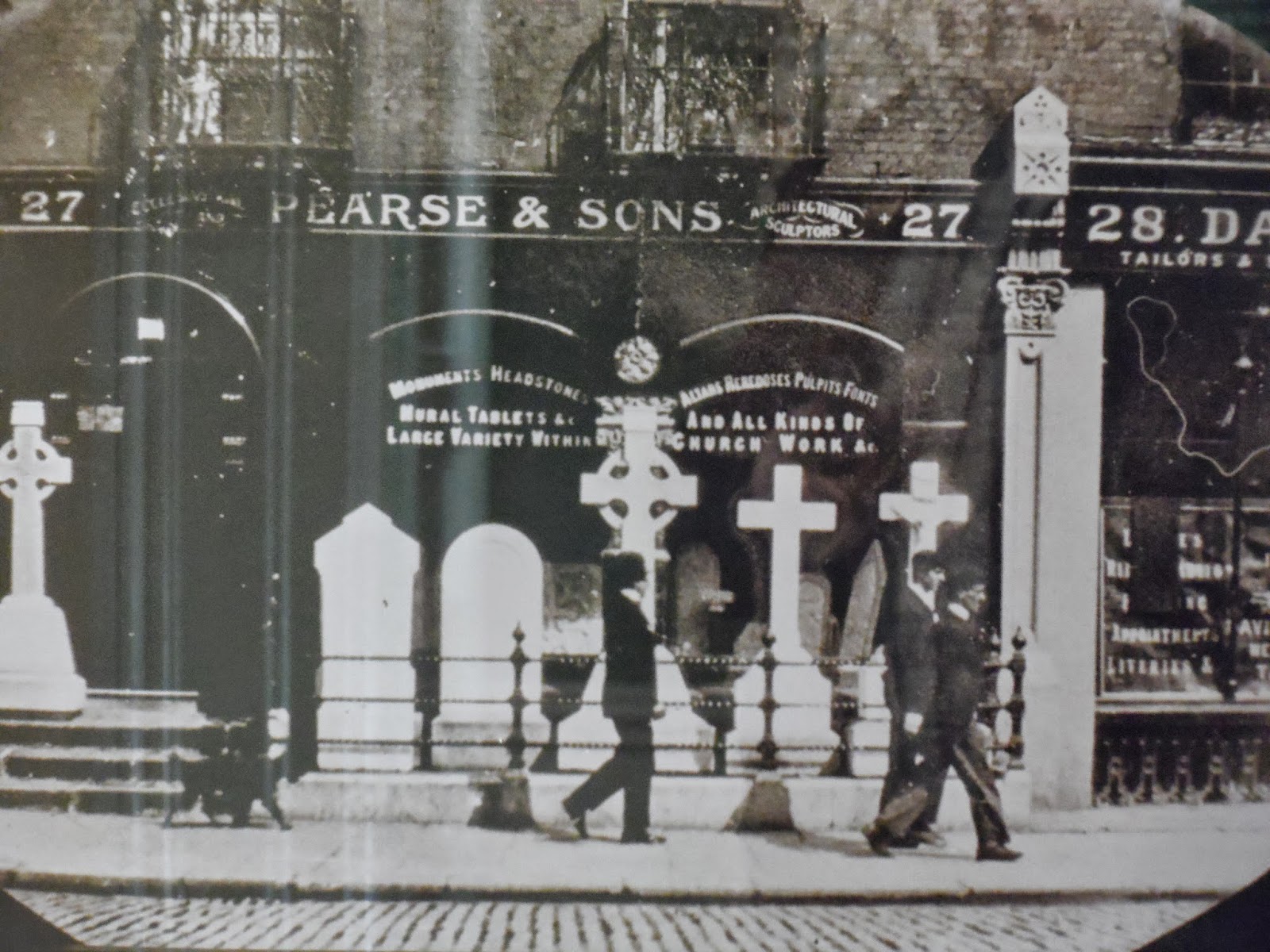Today I visited the Ireland Institute on Pearse Street in Dublin. The Institute is a remarkable institution that seeks to promote republican ideas and thinking and to develop a republican critique. The Ireland Institute describes itself as primarily concerned with the ‘idea of self-determination. The Institute believes that self-determination is a right to be exercised in accordance with the republican ideas of justice, liberty, equality, fraternity and democracy.’
It
was also for a time the family home of Padraig and Willie Pearse. Both were
born there. Padraig was the President of the Republic declared at Easter 1916
and subsequently he and Willie were executed by the British.
The Pearse Family home as it was
This
morning Sinn Féin appropriately launched our ‘Wear and Easter Lily’ campaign in
the Pearse family home. Two weeks from now tens of thousands of people in towns, villages and
cities, at country crossroads and at lonely hillside graveyards across the island,
will attend Easter commemorations to mark the anniversary of the Easter Rising.
They will gather to remember those republican
revolutionaries who, in 1916 courageously challenged the might of the greatest
empire the world has ever seen, and asserted in arms Ireland’s right to
independence and freedom and self-determination. They will also honour those
who died in the cause of Irish freedom in every decade since 1916.
But we need also to deliver on the promise of
the 1916 Proclamation. The Proclamation of the Irish Republic is unfinished
business. We do not yet have a United Ireland. We do not have yet have a
society where all the children of the nation are cherished equally.
As we approach the 100th anniversary of the
1916 Rising, Irish republicans must redouble our efforts and work together to
achieve that worthy and achievable goal. We firmly believe that we can achieve
the aims of Irish unity and a better society for everyone on this small island
- Catholic, Protestant and Dissenter, people of all religions and none, Irish
citizens and new communities alike.
We believe that this can be done
peacefully, democratically and by agreement. We also believe that that unity is
in the best interests of all our citizens, north and south, from whatever
tradition.
The 1998 Good Friday Agreement — the most
significant political development on this island since Partition, is the
framework within which all of this is possible.
The symbol of our enduring commitment to
these ideals and of our respect for all those, from every generation, who paid
the ultimate sacrifice for Irish freedom, is the Easter Lily.
With its simple design and its colours of
green, white and orange the Lily is a symbol long associated with the Easter
Rising of 1916 and one with a long and fascinating history.
The first Easter Lily badges were designed in
1925 by the republican women’s organisation, Cumann na mBan, the 100th anniversary
of whose founding we celebrated last week. The dual purpose of the Easter Lily badge was
to raise money for the Republican Prisoners’ Dependents Fund and to honour the
sacrifice made by the men and women of the 1916 Rising.
A year later, the Easter Lily Commemoration
Committee was formed. It continued in existence until 1965. One of its founder
members was 1916 veteran and leading member of Cumann na mBan, Sighle
Humphreys.
The original Easter Lily badge was hand-made
by republicans, who sold it often at great risk throughout the country.
In the early years of its existence, people
from a broad political spectrum - from Fianna Fáil to Sinn Féin, the IRA and
Fianna Éireann promoted the Lily as did non-political organisations such as
Conradh na Gaeilge.
In February 1935, the Fianna Fáil leadership
instructed the party to stop selling the Lily as it was “the symbol of an
organisation of whose methods we disapprove”.
For its Easter commemorations that same year,
Fianna Fáil introduced a new symbol called the ‘Easter Torch’. This was sold
for a number of years but soon went out.
Since the 1930s, successive Fianna Fáil and
Fine Gael governments have attempted to suppress sales of the Easter Lily. The
unionist regime followed suit in the north. Over the decades many republicans
have been harassed, arrested and jailed for keeping alive the memory of the men
and women of the Easter Rising and subsequent generations through promotion of
the Easter Lily.
Today, many thousands across this island,
north and south, continue to honour the heroic sacrifice of 1916. We
wear an Easter Lily with pride, mindful not only of the past but of the promise
of a brighter future.
And this year Easter lilies can now also be
bought online. They are available on the Sinn Féin book shop website which is sinnfeinbookshop.com and I would encourage everyone, young
and old to wear it with pride and to popularize it this Easter.



.jpg)



Comments